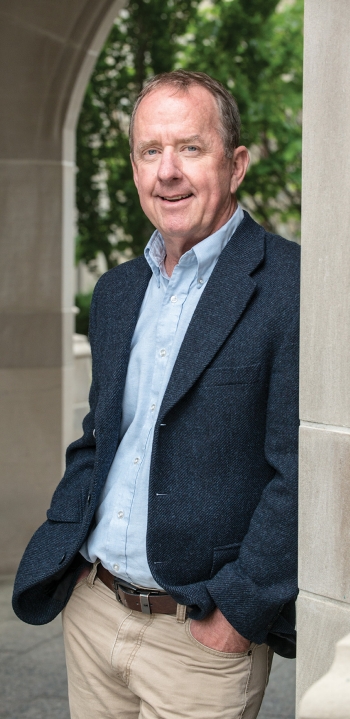
By
As political and sectarian strife roiled Northern Ireland from the 1960s to the late 1990s – claiming more than 3,500 lives and injuring tens of thousands – the British Broadcasting Corporation covered each grisly milestone during the era known as the “Troubles.”
In his new book, The BBC’s Irish Troubles: Television, Conflict and Northern Ireland, Professor of the Practice in History Robert Savage explores how the BBC’s coverage of the Troubles tested the integrity and independence of one of the world’s most trusted and respected media outlets.
“Labour and Conservative Governments alike tried to pressure, censor and bully the BBC both in Belfast and London,” said Savage.
“These governments were convinced that the BBC coverage of the turmoil in Northern Ireland undermined their efforts to defeat terrorism,” he said. “These governments were acutely aware of the power of television to damage the image of the United Kingdom at home and abroad and struggled to succeed in winning the ‘propaganda war.’”
Savage’s book focuses on the challenges the public broadcaster faced reporting on events taking place within the British enclave and beyond its borders. As violence continued, the BBC was attacked, threatened and bullied by a variety of actors but did its best to stand its journalistic ground, said Savage, an expert in Irish and British political and cultural history, including Irish media and film.
The Troubles claimed the lives of two BBC employees. Engineers Bill Thomas, 35, and Malcolm David Henson, 23, were killed in 1971 by an Irish Republican Army landmine as they drove to check a remote transmission tower in Northern Ireland. Bomb blasts targeted the BBC’s Broadcast Centre in Belfast in 1974 and Television Centre in London in 2001.
Savage explores how news and information about the conflict in Northern Ireland was disseminated by television news. He examines whether BBC broadcasts complicated the Troubles by challenging decisions, policies and tactics developed by governments trying to defeat a stubborn insurgency that threatened national security.
“The propaganda war that ensued created much consternation for officials in London, Belfast, and Dublin who understood the conflict presented a real and immediate threat to social order,” said Savage, who completed the book while a 2012 visiting research fellow at Trinity Long Room Hub, an institute at Trinity College Dublin. “Rules, regulations and policies that tried to suppress, shape or ‘spin’ coverage of the conflict were intended to marginalize extremists. Governments were acutely aware of the power of television to encourage sympathy or support for the very organizations they sought to destroy.”
Using recently released archival material from the BBC and a variety of government archives, Savage addresses the contentious relationship between broadcasting officials, politicians, the army, police and civil service from the outbreak of violence throughout the 1980s.
Even in the wake of a 1988 clamp on press freedoms by the Thatcher government, the broadcaster’s staff resisted government efforts to silence voices that, although unpalatable, were critical to comprehending and eventually resolving a long and bloody conflict.
“Throughout the conflict British governments tried to shape the way in which television depicted the struggle against paramilitaries, especially the Provisional IRA,” said Savage. “However, its relentless presence undermined government efforts to present a simple picture of the forces of law and order trying to defeat savage terrorists hell-bent on a campaign of murder and mayhem. All those involved in the conflict hoped to produce a narrative for both domestic and international audiences to justify their role in an increasingly bitter and violent struggle.”



